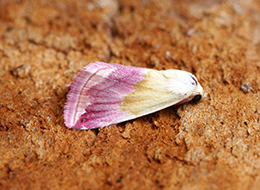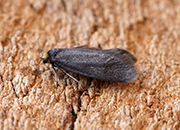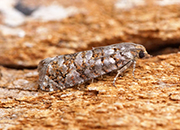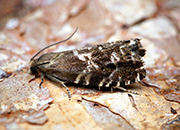Moth recording is still dire here in my garden, with pretty low numbers of moths.
Though on occasions i've recorded a few new species.
On Friday evening I noticed a Humming-bird Hawk-moth circuling the garden and then zooming off towards a nearby magnolia tree, it is my earliest ever sighting of this migrant.
Last night I ran the trap all night and was rewarded with 20 moths of 9 species, nothing out of the ordinary apart from two new ones, both regulars here in my garden.
The most common of the pair is Alucita hexadactyla, commonly referred to as the Twebty-plume moth (Which in itself is a lie, as it features less than that, many-plumed would be more fitting).
The other moth was a moth similar to the common Agonopterix heracliana, and part of the closely allied genus Depressaria.
This one is chaerophylli and my commonest of the group I get here, only just nabbing top spot from badiella.
chaerophylli can be told apart from similar species by the ruddy-rufous areas beside the head which doesn't feature on any other Depressaria (When fresh).
Moth garden list for 2023 stands at 43 species

 Musotima nitidalis
Musotima nitidalis L-album Wainscot
L-album Wainscot Feathered Ranunculus
Feathered Ranunculus Agonopterix nervosa
Agonopterix nervosa Blossom Underwing
Blossom Underwing Beautiful Marbled
Beautiful Marbled Lampronia fuscatella
Lampronia fuscatella Gravitarmata margarotana
Gravitarmata margarotana Perittia obscurepunctella
Perittia obscurepunctella Black-spotted Chestnut
Black-spotted Chestnut Cydia pactolana
Cydia pactolana













.JPG)



































